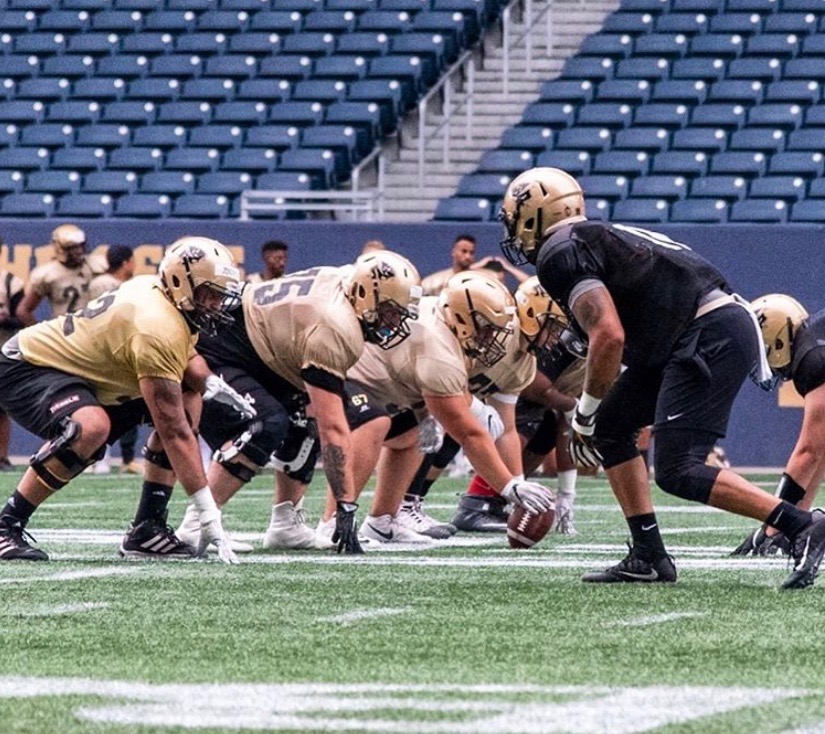Even though I enjoy watching sports, I like to imagine that I can always sympathize with the people who say they can’t understand sporting events. I nod knowingly when someone tells me they were completely lost following this hockey game or that football game. I know how it feels because no matter how much of a sports fan someone is, there are just too many sports in the world for a person to have even a decent understanding of all of them.
I can’t say I know all that much about NASCAR racing or fly fishing, but given the right opportunity and the right amount of personal investment, any sport can transform from foreign to familiar. Or at least that’s the working theory.
That’s the attitude I brought with me when I was invited to watch the Australian Football League (AFL) premiership game between the Collingwood Magpies and the St Kilda Saints this past weekend. Most Canadians didn’t get the feed until well after 11 p.m. so we were all prepared for a late night.
Now, long before hand, this was explained to me as the single biggest sporting event of the year in Australia. AFL games regularly draw anywhere from 70,000 to 90,000 fans in attendance and this was no exception. Apparently just one week earlier the AFL had hosted what was originally supposed to be the definitive premiership game between Collingwood and St Kilda but, for only the third time in nearly 65 years, the game ended in a tie, forcing officials to scramble and schedule the rematch.
I hadn’t seen the first premiership match, nor had I seen more than five minutes of a single AFL game before this one. These were mere details, though, artificial roadblocks keeping me from enjoying a sport that I barely even knew existed.
Before getting into the nitty-gritty, let’s establish some basic rules of engagement. At its core, Australian league football looks something like a mash up between American football and rugby. The main objective is to kick the ball through a set of goal posts located at the far end of the opponent’s zone. In order to get within good striking range, players must pass the ball by either “punching” it into the air or kicking it to a nearby teammate. Any time a player catches a kicked ball — this includes interceptions — it is called a “mark” and the opposing team has to give the player what is basically the equivalent of a free kick from that same area.
Aside from stoppages for marks, the game is a fairly fast-paced back and forth scramble in which an entire field of players frantically dash toward a ball that, due to its shape, is unpredictable even at the best of times. Like rugby, players wear little-to-no protective gear and so must essentially rely on common sense, instincts and a good constitution in order to avoid serious injury.
I’m not well-versed enough to know what kind of physical contact is illegal, but from what I understand if an opposing player is pursuing the football it’s fair game to tackle or body-check someone in the name of possession.
I had something of an idea just how brutal the game might be but the actual gameplay on the field always seemed to surpass my expectations. Not even a full minute had gone by before St Kilda had to send one of their players off the field because he was pouring blood from his head. Players would jockey for position with such intensity that on several occasions opponents would forgo a shoving match in favour of a bare-fisted punching match. Someone told me that because of the brutally intense nature of the AFL, players would rarely see their careers go far passed their early thirties. It was easy to believe, too; nearly every player on the field was wrapped in some sort of light bandage meant to protect a wound inflicted earlier in the year.
Just watching these players collide with each other with total reckless abandon makes you think very few make it out of the sport without significant long-term orthopedic damage.
Having said that, the physicality of the game definitely makes it all the more compelling to watch. From the opening whistle it took me a fair amount of time to grasp even the simplest AFL rules, but just witnessing the mad fervor these players ran on easily made up for what was essentially a complete lack of understanding.
I didn’t know anything about either of the two teams playing, but from what I gathered the St Kilda Saints were a bit of an underdog going into this matchup, whereas the Collingwood Magpies were the Australian equivalent of the New York Yankees; you don’t really root for them unless you’re already a fan. None of that really mattered to me. I just went for the same team my friends were going for.
I can’t say that I’m going to try and pick up AFL immediately, but it is a sport that, given enough time, can really hook you. While sports like baseball and golf are not always spectator-friendly, Australian rules football is frenetic, fast-paced and almost always exciting. Maybe in a year’s time I’ll know more than just two teams.
Oh, and the Magpies won, by the way.




